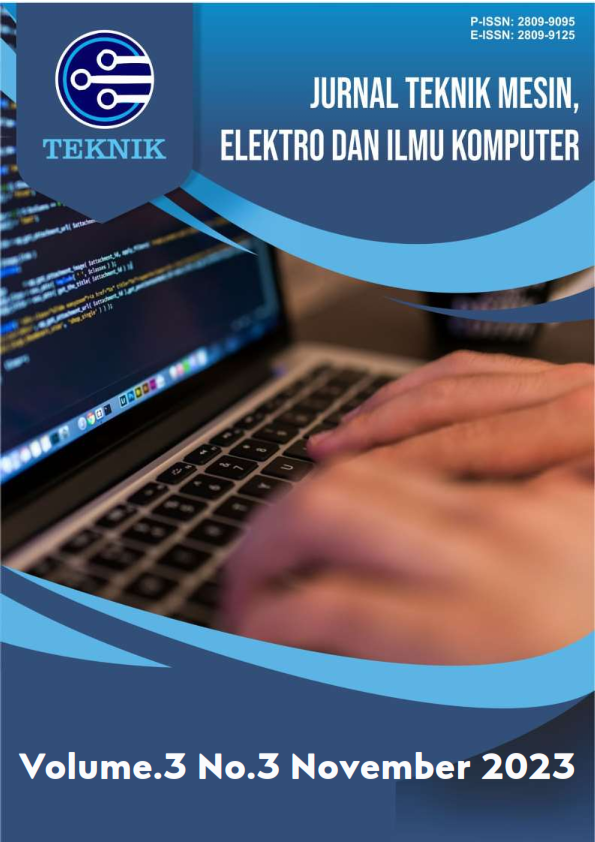Implementasi Algoritma CNN dalam Identifikasi Infeksi Jamur Superfisialis
DOI:
https://doi.org/10.55606/teknik.v3i3.2539Keywords:
Fungal Infections, Convolutional Neural Network, MobileNetV3Abstract
Mushrooms, as eukaryotic organisms that dominate the kingdom Fungi, play a crucial role as decomposers of organic matter in ecosystems. The diversity of mushrooms encompasses a variety of species, ranging from microscopic to macroscopic, widely distributed in various environments. Superficial fungal infections, or superficial mycoses, focus on fungal infections limited to the surface of the skin, nails, or hair. Such infections are typically localized, not penetrating deep into tissues and remain primarily a local condition. In the context of this study, the optimal model developed through training successfully achieved a validation accuracy of 92.590% and a training accuracy of 88.933%. Evaluation results indicate a precision value of 94%, a recall value of 93%, and an F1-score value of 92%. These findings highlight the success of the model in classifying and evaluating superficial fungal infections with high precision.
References
Ameen, M. (2010). Epidemiology of superficial fungal infections. Clinics in Dermatology, 28(2), 197–201. https://doi.org/10.1016/J.CLINDERMATOL.2009.12.005
ANHAR, A., & PUTRA, R. A. (2023). Perancangan dan Implementasi Self-Checkout System pada Toko Ritel menggunakan Convolutional Neural Network (CNN). ELKOMIKA: Jurnal Teknik Energi Elektrik, Teknik Telekomunikasi, & Teknik Elektronika, 11(2), 466. https://doi.org/10.26760/elkomika.v11i2.466
Ath-thariq, M., Suharsono, T. N., Studi, P., Informatika, T., & Buana, U. S. (2023). Deteksi Penyakit Kulit Serupa Pada Wajah Berbasis Mobile dengan Metode Convolutional Neural Network. 3, 876–887.
Howell, S. A. (2023). Dermatopathology and the Diagnosis of Fungal Infections. In British Journal of Biomedical Science (Vol. 80). Institute of Biomedical Science (IBMS). https://doi.org/10.3389/bjbs.2023.11314
Ilahiyah, S., & Nilogiri, A. (2018). Implementasi Deep Learning Pada Identifikasi Jenis Tumbuhan Berdasarkan Citra Daun Menggunakan Convolutional Neural Network. JUSTINDO (Jurnal Sistem Dan Teknologi Informasi Indonesia), 3(2), 49–56.
Naranjo-Ortiz, M. A., & Gabaldón, T. (2019). Fungal evolution: major ecological adaptations and evolutionary transitions. Biological Reviews, 94(4), 1443–1476. https://doi.org/10.1111/brv.12510
Rosida, F., & Ervianti, E. (n.d.). Penelitian Retrospektif: Mikosis Superfisialis (Retrospective Study: Superficial Mycoses).
Sistem, P., Penyakit, D., Pada, K., Menggunakan, K., Pangestu, I. Y., & Ramadhani, S. R. (2023). Perancangan Sistem Deteksi Penyakit Kulit Pada Kucing Menggunakan Deep Learning Berbasis Android Design of Skin Disease Detection System in Cats Using Android-Based Deep Learning. 12(November), 173–182. https://doi.org/10.34148/teknika.v12i3.673
Suartika E. P, I. W. (2016). Klasifikasi Citra Menggunakan Convolutional Neural Network (Cnn) Pada Caltech 101. Jurnal Teknik ITS, 5(1), 76. http://repository.its.ac.id/48842/
Whittaker, R. H. (n.d.). (New Concepts of Kingdoms of Organisms).
Wulan Dari, S., & Triloka, J. (n.d.). Kajian Algoritme Mask Region-Based Convolutional Neural Network (Mask R-CNN) dan You Look Only Once (YOLO) Untuk Deteksi Penyakit Kulit Akibat Infeksi Jamur.
Yohannes, R., & Al Rivan, M. E. (2022). Klasifikasi Jenis Kanker Kulit Menggunakan CNN-SVM. Jurnal Algoritme, 2(2), 133–144. https://doi.org/10.35957/algoritme.v2i2.2363
Downloads
Published
How to Cite
Issue
Section
License
Copyright (c) 2023 Jurnal Teknik Mesin, Elektro dan Ilmu Komputer

This work is licensed under a Creative Commons Attribution-ShareAlike 4.0 International License.








